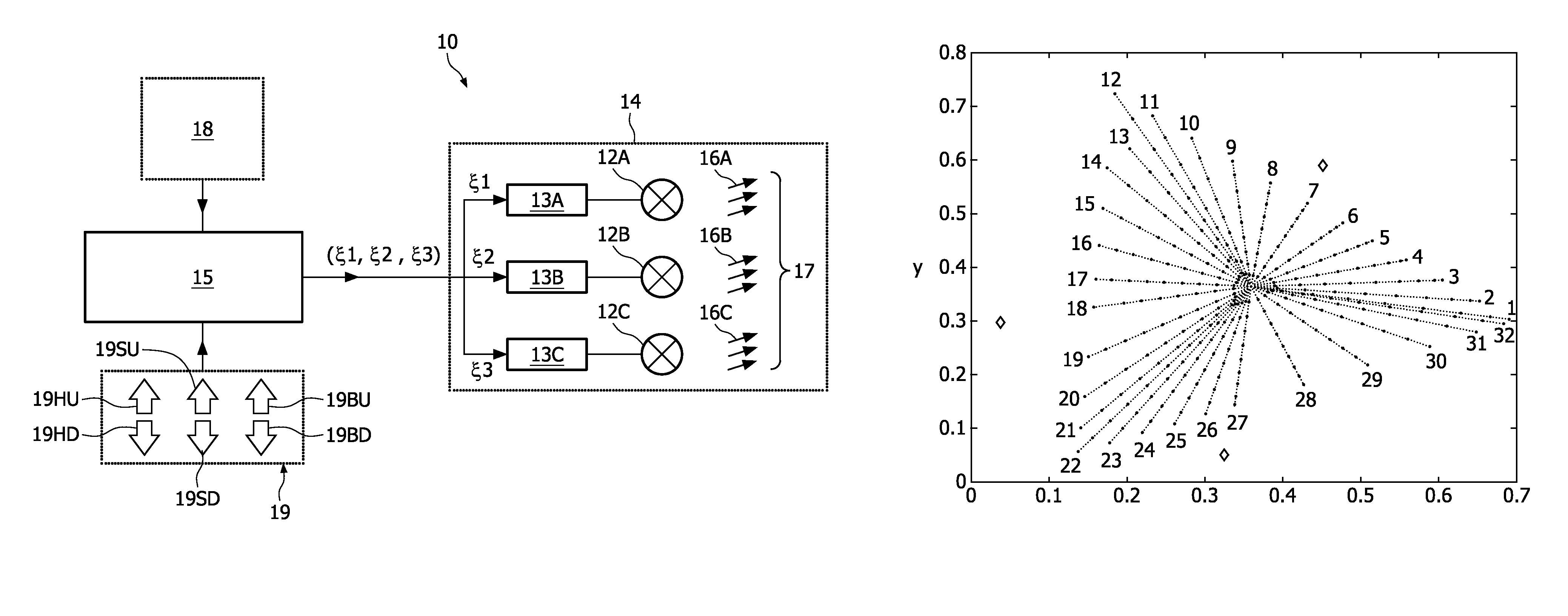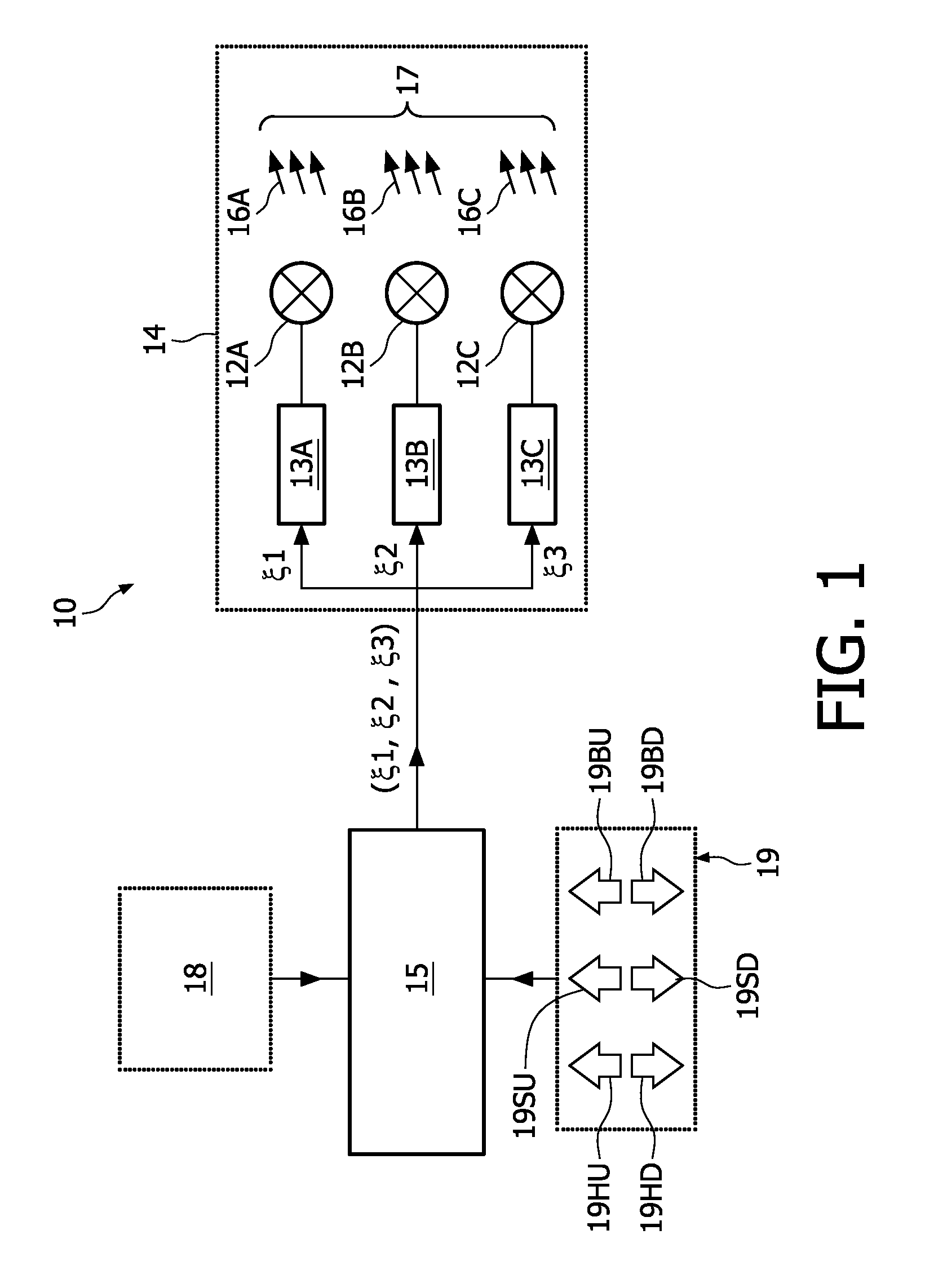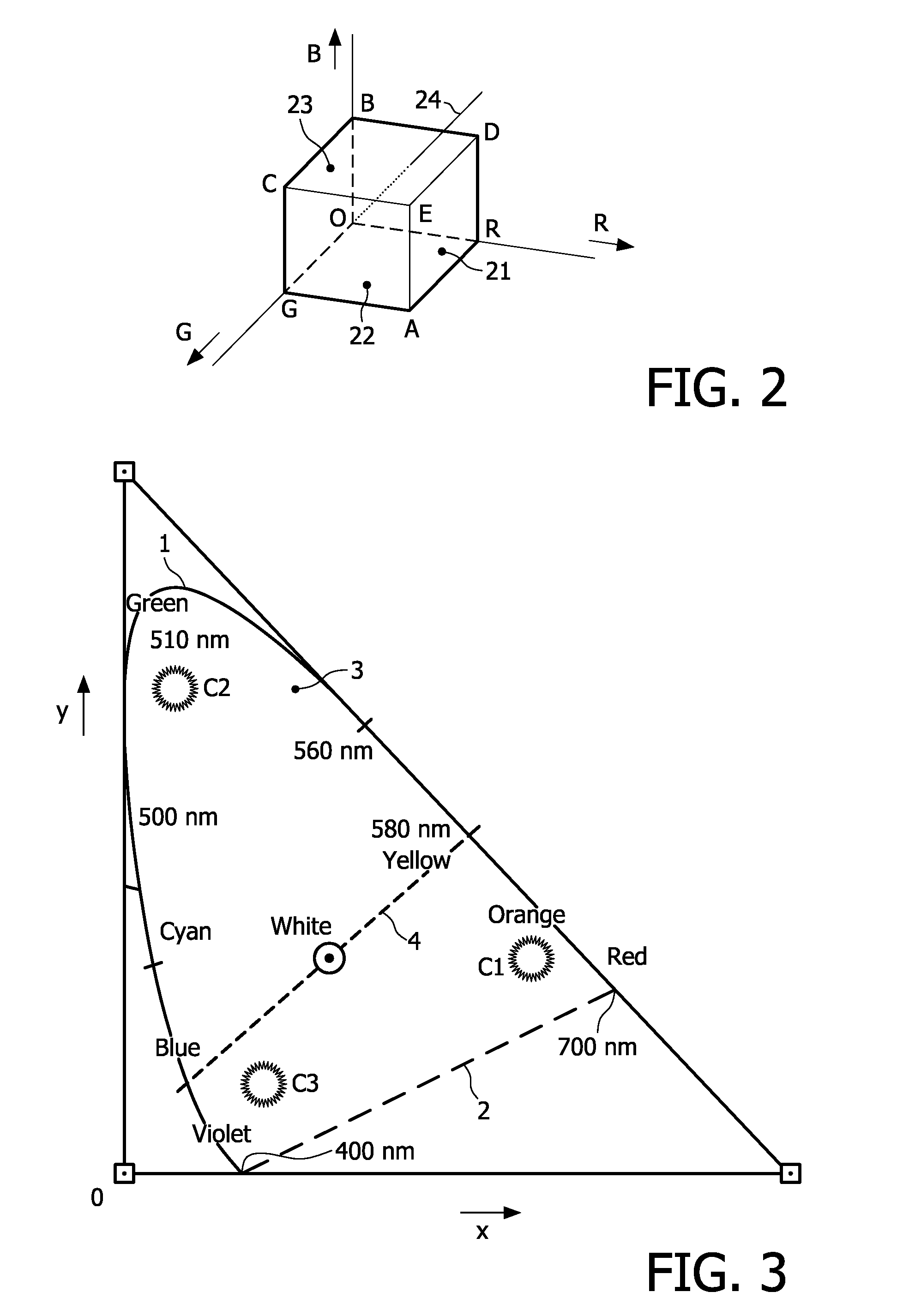Device for generating light with a variable color
a technology of light generation and color, applied in the field of lighting, can solve the problems of requiring a relatively large amount of memory space for 3d lookup tables, the amount of color change perceived by users is not constant, etc., and achieve the effect of fine color distribution and more weigh
- Summary
- Abstract
- Description
- Claims
- Application Information
AI Technical Summary
Benefits of technology
Problems solved by technology
Method used
Image
Examples
Embodiment Construction
[0019]FIG. 1 schematically shows a block diagram of an illumination system 10, comprising a lamp assembly 14. The lamp assembly 14 comprises a plurality (here: three) of lamps 12A, 12B, 12C, for instance LEDs, each with an associated lamp driver 13A, 13B, 13C, respectively, controlled by a common controller 15. A user input device is indicated at 19. The three lamps 12A, 12B, 12C generate light 16A, 16B, 16C, respectively, with mutually different light colors; typical colors used are red (R), green (G), blue (B). Instead of pure red, green and blue, the lamps will typically emit light close-to-red, close-to-green and close-to-blue. The overall light emitted by the lamp assembly 14 is indicated at 17; this overall light 17, which is a mixture of individual lights 16A, 16B, 16C, has a color determined by the mutual light intensities LI(R), LI(G), LI(B) of the primary lamps 12A, 12B, 12C, which in turn are determined by control signals ξ1, ξ2, ξ3 generated by the controller 15 for the ...
PUM
 Login to View More
Login to View More Abstract
Description
Claims
Application Information
 Login to View More
Login to View More - R&D
- Intellectual Property
- Life Sciences
- Materials
- Tech Scout
- Unparalleled Data Quality
- Higher Quality Content
- 60% Fewer Hallucinations
Browse by: Latest US Patents, China's latest patents, Technical Efficacy Thesaurus, Application Domain, Technology Topic, Popular Technical Reports.
© 2025 PatSnap. All rights reserved.Legal|Privacy policy|Modern Slavery Act Transparency Statement|Sitemap|About US| Contact US: help@patsnap.com



